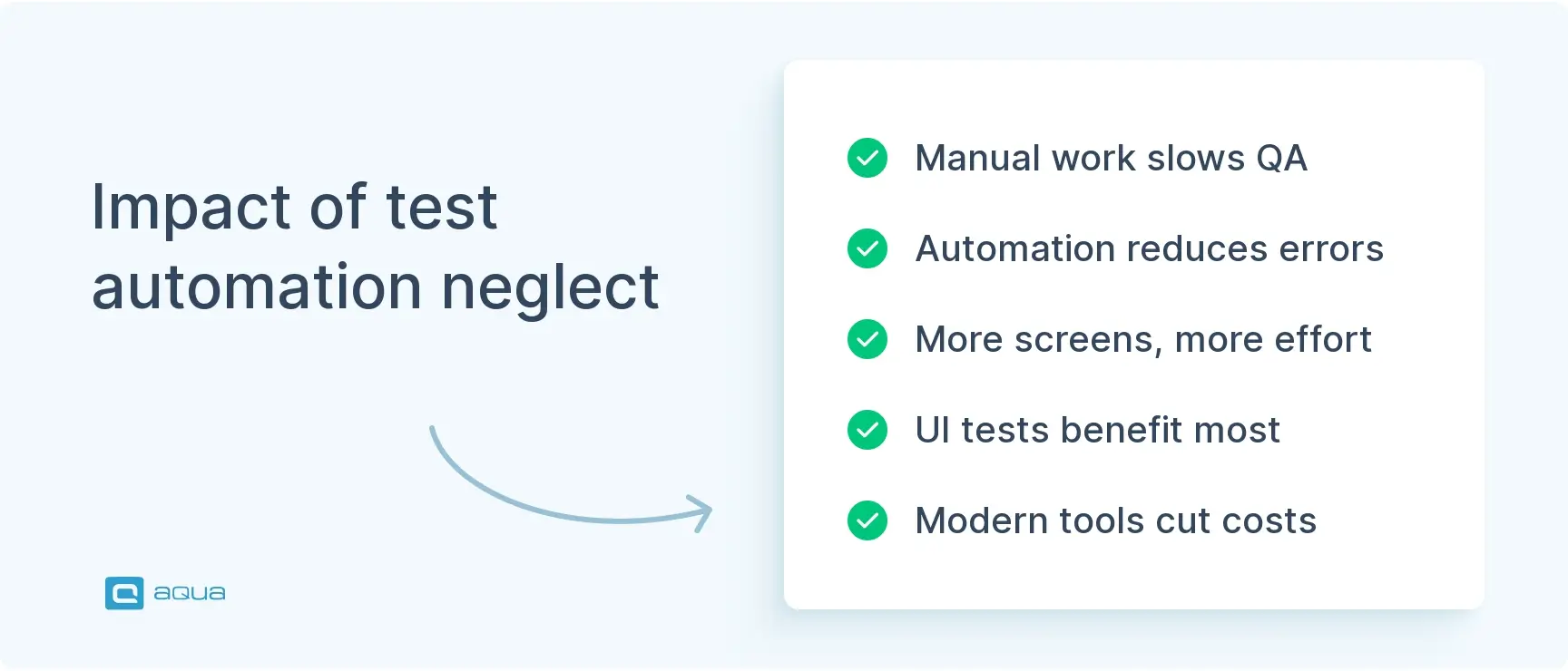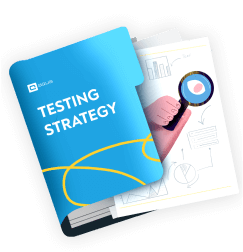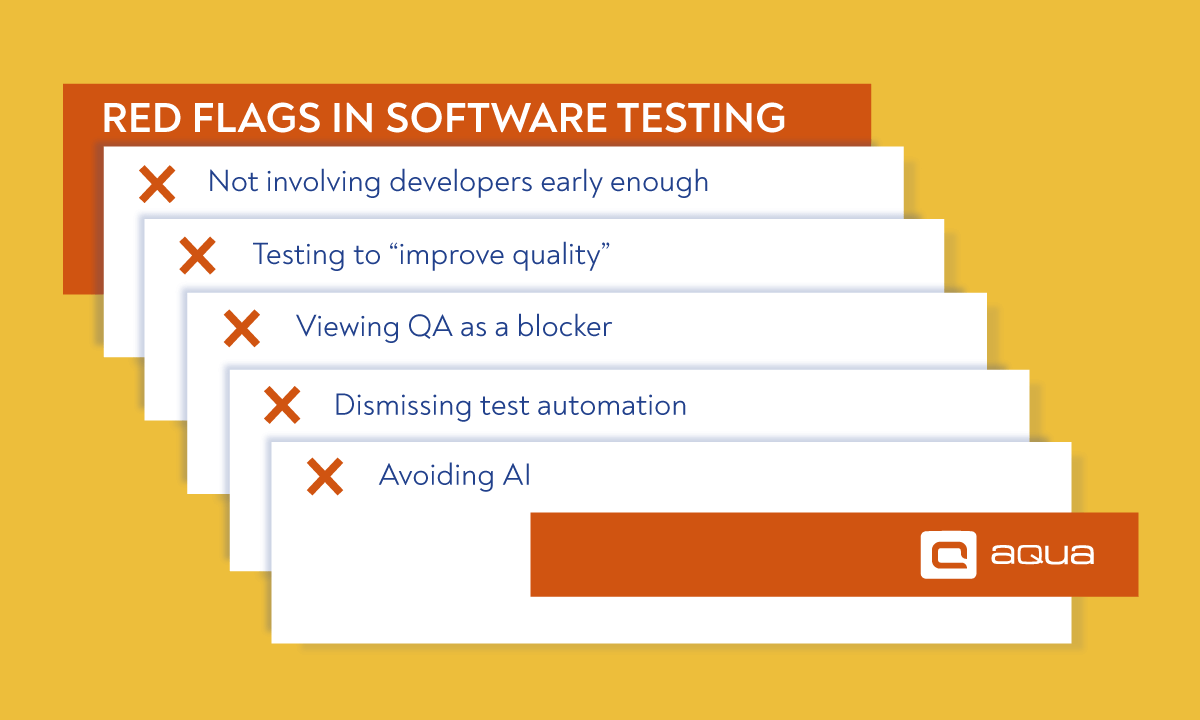1. Not involving developers early enough
QA testing problems are everyone’s problems. Product Owners can’t get the features they need fast enough. Project Managers have to change their timelines to the frustration of Product Owners. Devs need to spend time fixing their old code rather than writing new lines or refactoring. Ultimately, you delay the glorious moment when your business starts to make more money and you need more money to make it happen.
You can’t build solid software without unit testing; period. They are your first line of defence against bugs creeping into production. These quick tests catch problems before they snowball into bigger headaches. Mandate that every new feature requires unit tests hitting at least 80% code coverage before merge approval. Because unit tests actually speed up development once you get rolling, despite what sceptics claim. The less developers and QA have to talk about trivial issues, the faster a feature will pass the QA check.
That being said, utilising devs does not mean leaving them alone. Seniority and past experience will make it likely that you developers will not just appreciate, but require the help of QA to create unit tests. The time investment will certainly pay off, and in more than just better code. Working in someone else’s shoes does make you appreciate their job.
2. Testing to “improve quality”
It may sound odd, but a big problem in software testing is testing so your software has higher “quality”. Quality is subjective, and even then, chasing something without a threshold gets you into the diminishing returns territory pretty fast. Ask yourself: do you even know the level of quality required in your domain? Are you trying harder than needed and if yes, why?
Now that I got you thinking, I will point out that there is a measurable answer. Quality assurance metrics turn abstract “quality” into numbers that you can actually prioritise, track, and improve upon. Just like in business analytics, figures do not always tell the full story and sometimes mean nothing at all. Overthinking QA metrics is the other end of the spectrum.
The best way to track QA metrics is to create dashboards and reports. The better you organise a wide range of data, the more actionable insights you can draw from it. The aqua testing tool is perfect for this job. The Reports Wizard lets you make in-depth custom reports but also comes with a neat template library. Dashboards come with KPI Alerts so you are notified about important trends without even opening the dashboard.
Get an Enterprise-grade tool to monitor your QA metrics
Modern QA Metrics: What Really Matters
Quality assurance metrics shouldn’t just look impressive on your dashboard; they need to actually help you ship better software faster. The smartest teams track cycle time (how long from feature start to release), deployment frequency, and defect leakage rates; basically, how many bugs sneak past your testing into production.
You’ll also want to monitor your change fail percentage and mean time to recovery when things go sideways. Automated test coverage matters, but never in isolation. High deployment frequency only means something good if your failure rates stay reasonable; otherwise, you’re just breaking things quickly.
Set up visual dashboards that show trends over weeks and months, not just today’s snapshot. Use these numbers to improve your process, never to point fingers. Blameless post-mortems paired with solid metrics create the kind of environment where people actually want to report problems early.
3. Viewing QA as a blocker
While not strictly a software testing process mistake, the wrong attitude can very well affect it.
Quality assurance is effectively the last hurdle before you can release a new build or even launch a product. A lot of people have done their best to get there. The product team came up with requirements, designers made some sick visuals, copywriters wrote colourful texts, and devs provided well-structured code. Hopefully, there is a passionate founder around as well. Now, all these people are waiting for the QA check to end.
And QA checks do not always end fast, especially for a new product and/or companies that did not start testing early enough. There will be bugs, at times painful troubleshooting, a fixed build, and probably some old or even new bugs in it. This nature of the game is all too familiar, and it can drive some people more impatient than others.
While obviously biassed from their line of work, here’s a quote from somebody that has seen it all:
“The problem is not that testing is the bottleneck. The problem is that you don’t know what’s in the bottle. That’s a problem that testing addresses.“
4. Dismissing test automation
Test automation has not always carried the positive sentiment it has now. Even looking through early 2010s materials, you can still see people that struggle to justify the time and resources needed to make it work. Good automation engineers command a high salary, and it can be hard to justify before an automation engineer explains their value to you.
That being said, problems with test automation and modern QA are not the same as they were 10 years ago. There is a booming market of affordable automation solutions. As user expectations go up, you do run into situations when there is too much to test. Sticking to manual testing only will make your QA a bottleneck, and Michael Bolton won’t be able to back you up here.
If you’re looking for inspiration, UI testing is a great area to automate things. Our website currently has 5 various layouts depending on the reader’s screen. Testing if the same thing works properly on 5 different screens introduces a very repetitive routine. Solutions like Applitools and Testim will both reduce the time and increase the precision for such tests.


Get a testing strategy template that enables us to release 2 times faster
QA Beyond Pre-Release: Embrace Shift-Right Testing
Quality assurance doesn’t clock out when your code ships. You need to throw in shift-right techniques like canary releases, feature flags, real-time monitoring, and A/B testing to keep quality checks running in production.
Start with feature flags on your next release – they let you test with actual user data while keeping a safety net. You’ll catch weird edge cases that staging environments miss, spot performance issues faster, and roll back changes without breaking a sweat. Studies show teams using these approaches see defect detection improve by nearly 40%. The unexpected bonus? Your developers start thinking about production resilience during the design phase, not just after something breaks. Pair this with solid CI/CD practices, and you’ve got a feedback loop that actually teaches your team something new each sprint.
5. Avoiding artificial intelligence
You’ve probably noticed AI testing tools popping up everywhere, and honestly, they’re worth the hype. These systems can now churn out test cases straight from your user stories and predict which parts of your code are most likely to break during regression testing. Here is the thing: AI can actually fix those annoying flaky UI tests by automatically updating element locators when developers shift things around. No more babysitting brittle automation scripts.
Start by letting AI generate your initial test cases from existing documentation. Your expertise becomes more strategic while the mundane stuff handles itself.
Large language models have been the greatest contributor to actually valuable AI in software development. While not always powerful, low-code coding solutions have been reducing the time and knowledge required to get engineering tasks done. Analysing patterns and acting on them is another trait of AI, and UI testing solutions that I mentioned earlier do that well too.
The biggest impact, however, comes from generative AI. ChatGPT has proven to be surprisingly capable at coding tasks. It is, however, still limited by the amount of context you can realistically feed it. Also, while not a major issue now, being months and years behind on software development events will be a problem. You can’t realistically ask it to do management of the testing process.
Luckily, OpenAI allowed other companies to develop GPT-based solutions even earlier than they presented ChatGPT. You can find really impressive solutions for the entire product lifecycle, from making requirements to testing software and promoting it. AI-powered quality assurance that can be personalised to your test suite is as powerful as it sounds. The benefits are much easier to reap compared to setting up test automation, too.

Conclusion
Quality assurance needs transparency and validation of its own, too. While every project has its unique needs, you will save yourself a lot of pain if you spot these red flags early.
Speaking of traceable QA, aqua has you covered. It is an Enterprise-grade tool that also provides innovative features to companies of any size. The list includes test generation and prioritisation with AI, while traditional QA functionality has been matured over 10 years.
Get innovative test management solution to turn red flags green

















